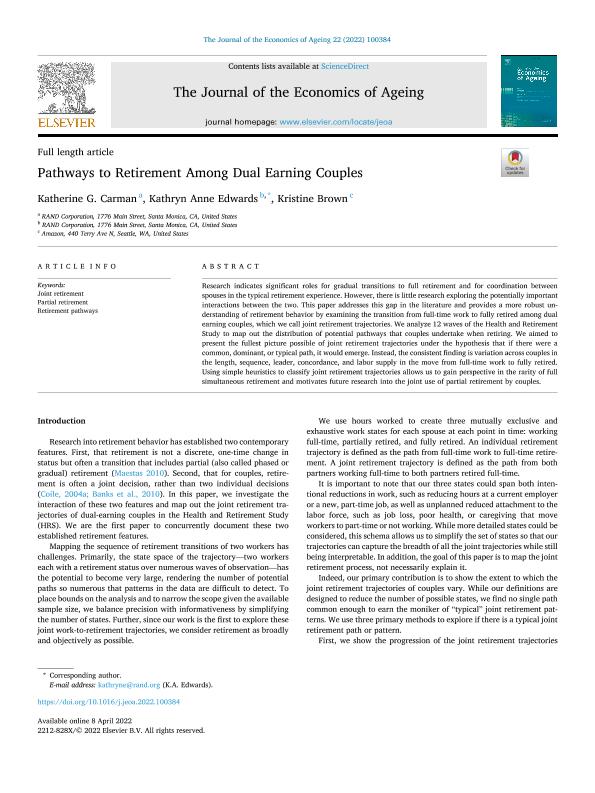Pathways to Retirement Among Dual Earning Couples

Contenido multimedia no disponible por derechos de autor o por acceso restringido. Contacte con la institución para más información.
| Tag | 1 | 2 | Value |
|---|---|---|---|
| LDR | 00000cab a2200000 4500 | ||
| 001 | MAP20220017527 | ||
| 003 | MAP | ||
| 005 | 20220613124112.0 | ||
| 008 | 220613e20220606esp|||p |0|||b|spa d | ||
| 040 | $aMAP$bspa$dMAP | ||
| 084 | $a931.2 | ||
| 100 | 1 | $0MAPA20220006095$aCarman, Katherine G. | |
| 245 | 1 | 0 | $aPathways to Retirement Among Dual Earning Couples$cKatherine G.Carman |
| 520 | $aResearch indicates significant roles for gradual transitions to full retirement and for coordination between spouses in the typical retirement experience. However, there is little research exploring the potentially important interactions between the two. This paper addresses this gap in the literature and provides a more robust understanding of retirement behavior by examining the transition from full-time work to fully retired among dual earning couples, which we call joint retirement trajectories. We analyze 12 waves of the Health and Retirement Study to map out the distribution of potential pathways that couples undertake when retiring. We aimed to present the fullest picture possible of joint retirement trajectories under the hypothesis that if there were a common, dominant, or typical path, it would emerge. Instead, the consistent finding is variation across couples in the length, sequence, leader, concordance, and labor supply in the move from full-time work to fully retired. Using simple heuristics to classify joint retirement trajectories allows us to gain perspective in the rarity of full simultaneous retirement and motivates future research into the joint use of partial retirement by couples. | ||
| 650 | 4 | $0MAPA20080554927$aJubilación | |
| 650 | 4 | $0MAPA20080568771$aEnvejecimiento | |
| 773 | 0 | $wMAP20210010194$g06/06/2022 Volumen 22 - 2022 , 11 p.$tThe Journal of the economics of ageing $dOxford : Elsevier ScienceDirect, 2021- |

